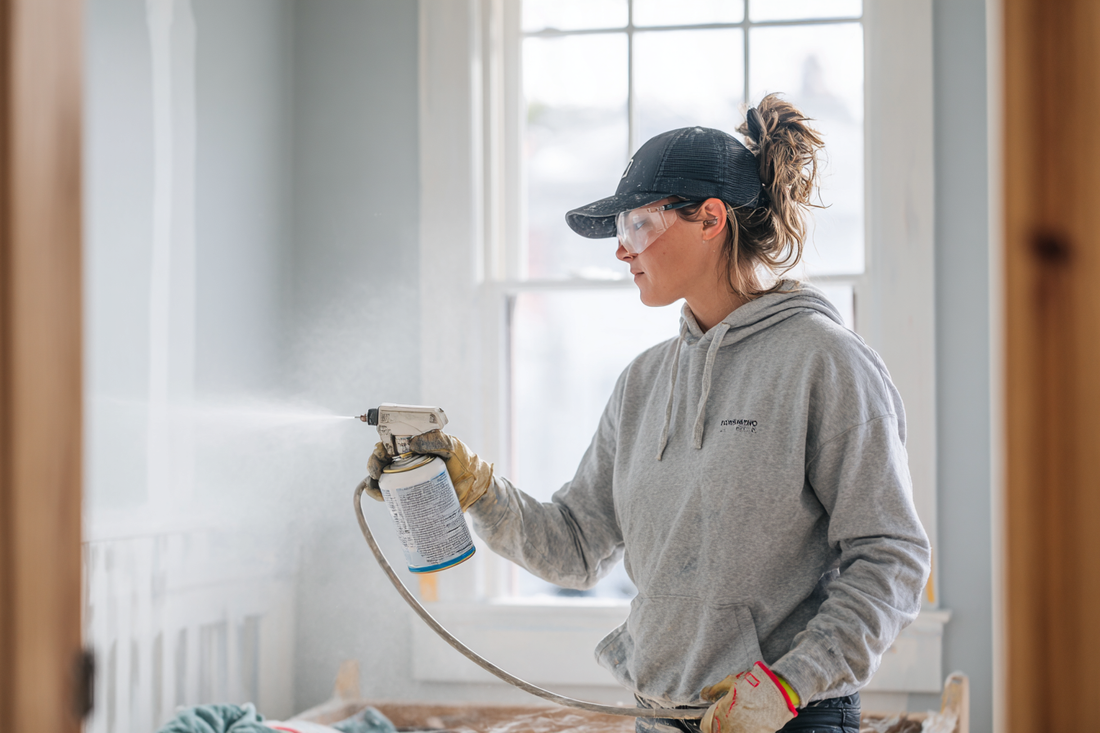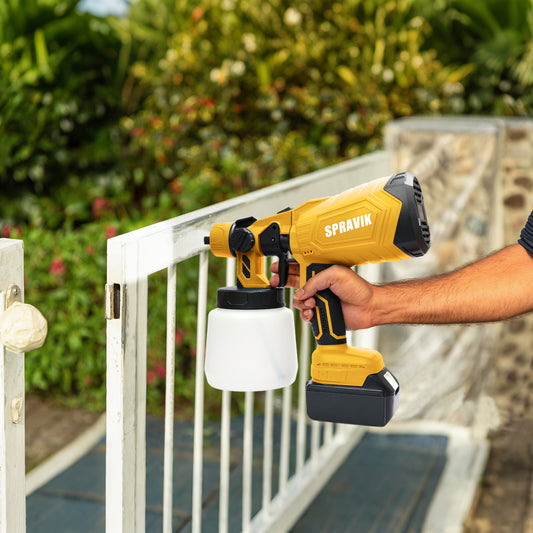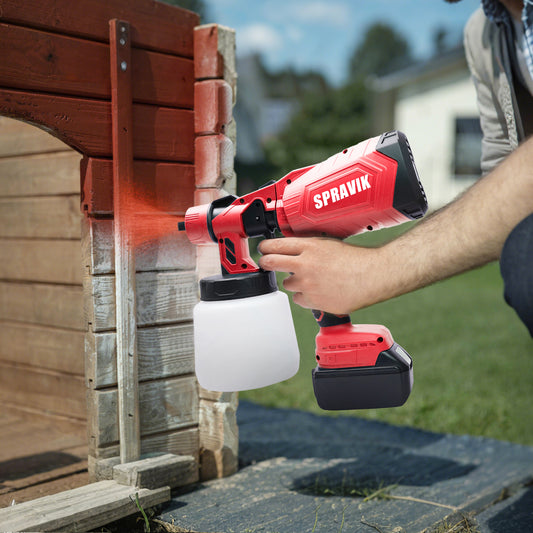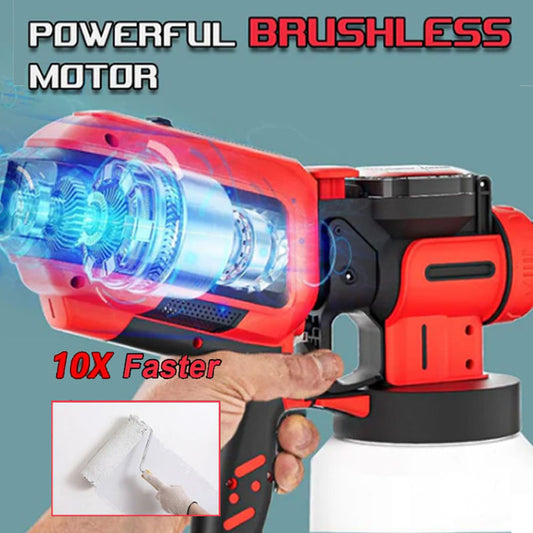
How to Choose the Right Paint Sprayer for Furniture, Walls, and Cabinets
Spravik AdminChoosing the right paint sprayer can be the difference between a flawless, professional-looking project and a frustrating mess of overspray, uneven coats, and endless cleanup. Whether you're painting furniture, walls, or kitchen cabinets, the right tool matters. With the rise of modern painting solutions, such as automatic spray painting systems and ergonomic gun for paint sprayer designs, DIYers now have access to equipment once limited to professionals.
To get the best results from your paint job, it’s crucial to understand how different paint sprayers work, what features matter for each project type, and how to match the tool to the task. From small decorative chairs to large room walls, every surface requires a tailored approach.
Furniture painting demands precision. A sprayer with fine control and adjustable spray patterns is ideal. When working with intricate surfaces, automatic spray painting systems offer consistent coverage that eliminates brush marks and reduces fatigue. Look for a gun for paint sprayer that allows for narrow fan patterns, enabling you to get into corners, curves, and carved surfaces without excess paint buildup.

For walls, coverage and speed are essential. Here, high-capacity sprayers with wide fan patterns work best. Automatic spray painting units shine in this area, delivering uniform coats across large areas with minimal effort. A quality gun for paint sprayer should include variable pressure controls and interchangeable nozzles to adapt to different wall textures and paint viscosities.
Cabinets, particularly kitchen cabinets, present a unique challenge. They combine the need for smooth finishes (like furniture) with moderate surface area (like small walls). The ideal paint sprayer here balances precision with speed. A gun for paint sprayer designed for cabinet painting typically includes low overspray tips and a tight spray pattern. Automatic spray painting equipment offers the benefit of uniform coating on both flat panels and detailed edges.
When choosing a paint sprayer, consider the type of paint you’ll be using. Latex paints, for instance, require sprayers capable of handling higher viscosities. Not all guns for paint sprayers are built equally—some clog easily or require extensive thinning. Automatic spray painting systems are often designed to atomize thicker materials efficiently, saving time and improving finish quality.
Ease of use and maintenance are also important. A good sprayer should be easy to clean and assemble. Look for models with detachable parts and simple flushing systems. Many automatic spray painting kits come with self-cleaning modes or quick-flush features, making post-project cleanup less of a chore.
Another key factor is portability. If you're working in tight spaces—like a small bathroom wall or furniture in a cramped garage—opt for a compact gun for paint sprayer with flexible hoses or cordless operation. Portability doesn’t mean sacrificing power; many lightweight units now pack high PSI output with the efficiency of larger models.
Durability is critical for repeated use. Look for stainless steel parts, reinforced hoses, and wear-resistant nozzles. While automatic spray painting systems may come with a higher upfront cost, their reliability and consistent performance often save money over time.

Noise level and spray control are additional considerations. Some electric sprayers can be loud, which is a concern for indoor projects or shared spaces. Choose a gun for paint sprayer with quieter operation and precision control settings if noise is an issue. Automatic spray painting systems often include smart sensors that adjust spray output based on your hand movement or surface distance, improving results while reducing operator error.
Safety features should never be overlooked. Look for thermal overload protection, trigger locks, and ergonomic grips. Painting can be a lengthy process, and comfort matters—especially when working overhead or on detailed areas like cabinet moldings.
Budget plays a role in any purchase decision. Entry-level spray guns for furniture may cost as little as $50, while professional-grade automatic spray painting setups can range from $200 to $1000+. It’s important to balance features with what you realistically need. If you plan to paint frequently or across a range of surfaces, investing in a high-quality, versatile sprayer makes sense.
When evaluating products, reviews and tutorials are your best allies. Many manufacturers offer demo videos showcasing how their gun for paint sprayer performs on different materials. Watching real-life results can help you choose a model that suits your specific needs and avoid buyer’s remorse.
Practice makes perfect. Even the best sprayer requires a learning curve. Before painting your main project, test the tool on cardboard or scrap wood. Adjust the settings, try different spray distances, and get a feel for how the paint behaves. Automatic spray painting tools often make this learning process easier by standardizing spray patterns and pressure.
If you're working indoors, make sure to prepare the area thoroughly. Cover floors, mask off trim, and ensure proper ventilation. Even low-overspray models can leave mist behind. Many users underestimate how much preparation is needed for a clean, successful paint job.
Compatibility with accessories is another plus. Some guns for paint sprayers support extensions for ceilings or under-furniture angles, while others allow for dual-container usage for large jobs. These extras can significantly improve workflow and reduce project time.
Paint type also determines the right sprayer. Water-based paints generally work with most electric models, but oil-based paints may require more robust seals and cleaning protocols. Automatic spray painting systems often include multiple tips and internal settings that adapt to different paint formulas, reducing the guesswork for users.
Don’t forget to maintain your sprayer. Regular cleaning and proper storage can extend the lifespan of your equipment. Check filters, nozzles, and hoses for wear and tear. Follow the manufacturer's instructions for deep cleaning, especially if you switch between paint types.
In conclusion, choosing the right paint sprayer for your furniture, walls, or cabinets comes down to understanding your project scope, paint type, working environment, and personal comfort level. Whether you’re drawn to the convenience of automatic spray painting or the precision of a reliable gun for paint sprayer, the right tool will make every project faster, cleaner, and more enjoyable.
As spray painting continues to evolve, even amateur DIYers can now achieve professional finishes with the right preparation and equipment. Make your next project a success by investing in a sprayer that fits your goals—and always test, prep, and protect your space before you spray.










